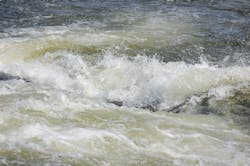EPA Approves New Jersey’s List of Polluted Water Bodies
The U.S. Environmental Protection Agency (EPA) has approved the 2010 list of waters in New Jersey that are considered either impaired or threatened by pollutants. An impaired water body is one that does not meet federal water quality standards even after pollution controls have been put in place. A threatened water body is one that is expected to be impaired within two years. The list helps establish priorities for addressing threats from water pollution.
“Identifying and prioritizing the state’s most seriously polluted waters are important steps in our work to reduce water pollution,” said Judith Enck, EPA Regional Administrator. "New Jersey faces serious water quality challenges including the need to reduce pollution from combined sewer systems that allow raw sewage to flow into waterways when it rains. By upgrading old infrastructure and implementing green infrastructure strategies, New Jersey communities can improve water quality.”
The Clean Water Act requires states to assess the quality of their waters and to report their findings to the EPA every two years. The list is compiled by the New Jersey Department of Environmental Protection and is a valuable tool for reaching the Clean Water Act goal of “fishable and swimmable” waters for all of New Jersey.
The list specifically includes impaired waters for which the development of budgets for the amount of water pollution allowed is necessary. The budgets define the maximum amount of a pollutant that a water body can receive and still meet water quality standards. They are developed by states and approved by the EPA once the agency determines that the budget will allow the water body to achieve water quality standards.
The most common pollutants causing impairment in New Jersey water bodies include PCBs (8.33%), dissolved oxygen (8.19%), phosphorus (7.86%), pH (7.62%), and arsenic (6.89%). New Jersey’s 2010 list identifies 2,112 instances in which a pollutant is causing an impairment of a water body that keeps it from supporting its “designated use” for drinking water, swimming and recreation, fishing or other activities specified by the state.
The list also notes the most common sources of water pollutants, which include urban/stormwater runoff, combined sewer overflows from systems that capture both domestic sewage and stormwater, and air pollution, including acid rain. A pollutant may come from more than one source.
In 2010, new pollutants were included for waters in the basins of the Hudson River, the Passaic River, the Raritan River, the Delaware Bay, and others. The EPA will continue to work with state and local governments to ensure that impaired waters are cleaned up.
A complete list of impaired waters in New Jersey is available at: http://www.epa.gov/region02/water/waterbodies.
Source: U.S. EPA
